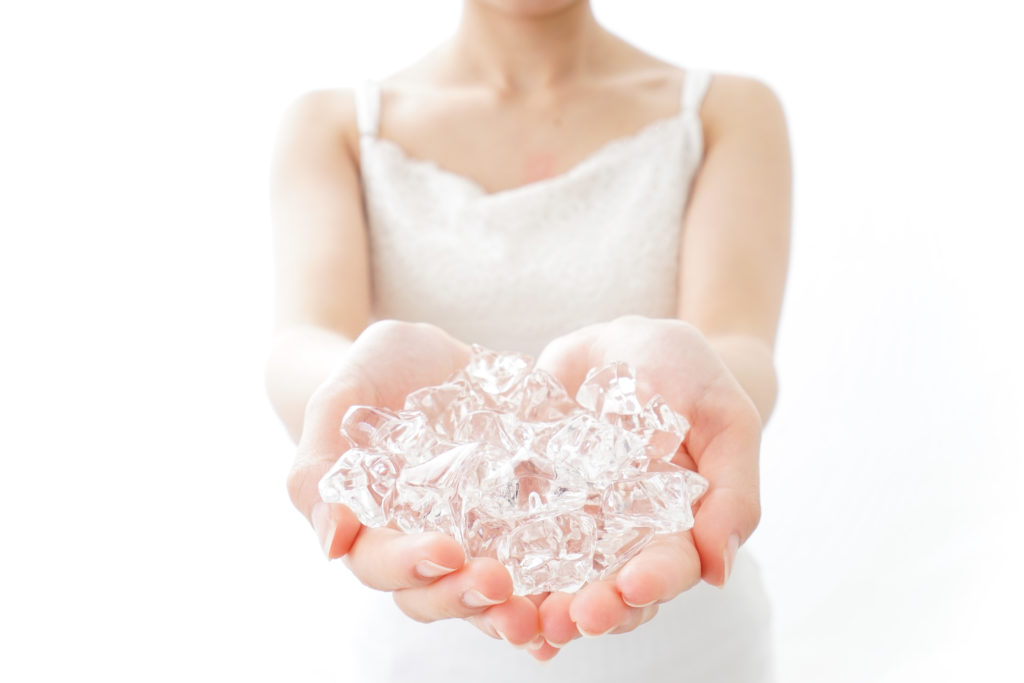Ice ice baby.
It’s in your smoothies, your coffee, and now, your bathtub? Hear us out.
You’ve experienced the benefits of holding an ice pack to a newly bruised knee, right? That’s because ice is a known anti-inflammatory often recommended by coaches, trainers and doctors when people, and often athletes, face injuries. So you know it’s helpful, but you probably don’t take the next step and fully submerge yourself in a tub of ice or step into a cryotherapy chamber.
But should you?
The general idea behind cryotherapy is that it’s a pain relief option for inflamed, overused or injured muscles. There are three main types of cryotherapy: cold therapy, Cold Water Immersion (CWI) and Whole Body Cryotherapy (WBC). In addition to relieving sore muscles and reducing inflammation, each of these types of cryotherapy bring their own benefits. But with any new fad comes risk and the potential for the spread of misinformation.
So we looked into it – here’s the cold hard truth about cryotherapy.
Cold therapy
Let’s start with the basics. Cold therapy is using ice to reduce swelling and inflammation of an injured body part. Basic cold therapy typically includes an ice pack placed directly on the injured area. However, in some cases, such as after an orthopedic surgery, a person may use an ice therapy machine which continuously pumps ice cold water through a wrap that is placed on the injury. This alleviates having to refreeze or refill an ice pack. These machines have been known to decrease recovery time.
Cold Water Immersion
CWI is the ice therapy that you see college level and professional athletes taking part in after an intense game or practice. It typically involves a giant tub filled with an insane amount of ice and topped off with enough water for a person to sit in. The idea is that immersing the whole body, or sometimes just one body part, in ice water quickly decreases inflammation and shortens overall recovery time. However, you don’t have to be an injured athlete to benefit from CWI therapy. People outside the world of sports claim that CWI can do more than just ridding the body of minor aches and pains. Here is a short list of benefits:
- increase lymphatic circulation
- boost mood levels
- increase cardiovascular circulation
- increase attention and alertness
Are you ready to take the CWI plunge? Don’t worry, it doesn’t have to be as extreme as soaking in a giant ice-filled tub. You can start with standing in a cold shower for a few minutes and working your way up to immersing yourself in a cold bath. Make sure to limit your cold water immersions to under 20 minutes per day. Eventually you can graduate to soaking in a few buckets of ice.
Whole Body Cryotherapy
WBC is when you strip down to your knickers and enjoy a chill session in a cryo chamber or a cryosauna, both set at a balmy range of between -130F and -184F. Don’t worry, you’re allowed to keep your socks on and you get to cover your hands with gloves!
A cryo chamber is like a giant walk-in freezer where multiple people can participate in WBC at the same time. A cryosauna is like a regular refrigerator that you walk into, but has an open top where your head sticks out. Both types of cryotherapy deliver the same results, it just depends on if you want to be alone or chill with others.
About those benefits…what in the world could come of standing naked in a freezer?
Just a few ways you could benefit:
- faster recovery from a sports injury
- diminish symptoms of chronic pain from conditions such as rheumatoid arthritis
- performance improvement for athletes
- aid in weight loss
- improved mental wellness
The good news about WBC is that although it is increasingly colder than CWI, most chillers start out around two minutes and work their way up to three minutes, which is the max.
Why not?
Despite those benefits, the most extreme form of cold therapy – WBC – has not been approved by the Food and Drug Administration (FDA). The reason? No evidence to support the supposed benefits. On top of that, people with certain health conditions should avoid chilling altogether.
According to Harvard Health, if you suffer from any of the following health conditions, you should avoid all types of cold therapy:
- poorly controlled high blood pressure
- major heart or lung disease
- poor circulation (especially if made worse by exposure to cold)
- allergy symptoms triggered by cold
- neuropathy (nerve disease) in the legs or feet
If you are healthy enough to try chilling, start small. Cold shower anyone?




